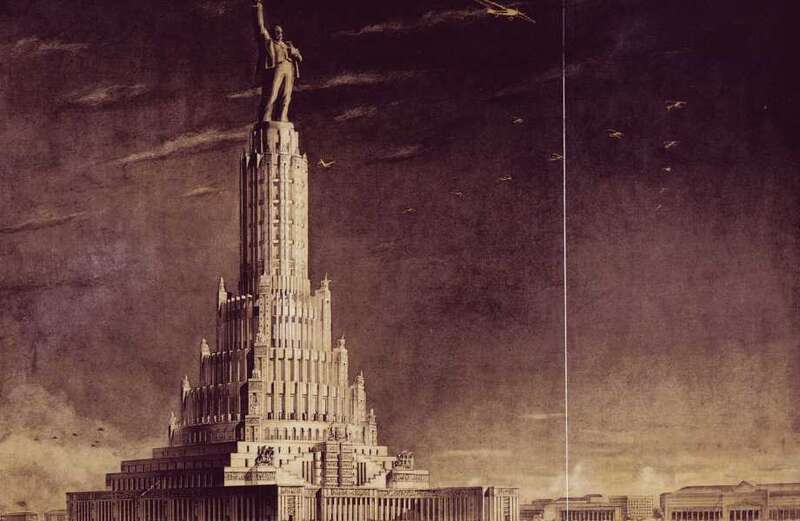THIS Soviet Palace was set to become one of the biggest landmarks in the world - until its engineers were sent into combat.
Plans for the megastructure envisioned a 1,335ft beast of a building, adorned with a staggering 330ft statue of Lenin sitting on top.




The idea was conceived in the early 1920s as a symbol for the power of the country, and the importance of socialism.
It was supposed to house government bodies, and serve as a venue for the Supreme Soviet of the USSR to host sessions.
In 1931 Stalin announced a competition for the design of the Palace of the Soviets.
 Putin accused of surrounding himself with same 'actors' at series of events
Putin accused of surrounding himself with same 'actors' at series of events
Although it wasn't until 1932 that a proposal was chosen - from a Soviet architectural team headed by Boris Iofan.
Other entrees included The Narkomtiazhprom, by the Vesnin brothers, who thought the Palace should reflect the importance of construction and industry in the Soviet Union.
Iofan, however, thought that attention should be placed on the role of the worker.
He initially envisioned the mammoth of a building featuring a statue of a proletariat atop - although Stalin swiftly changed these plans.
Stalin, who ruled over the building's design plans with an iron fist, thought the palace should become a monument to Lenin and the importance of his teachings.
The design documents read: “The arm of the statue stretching over Moscow will have a length of almost 30 meters.
"The index finger is over four meters long.
"On a clear sunny day, the Lenin statue will be visible from a distance of tens of kilometers.”
If built, it would have become the world's tallest structure at the time - complete with a grand hall that could accommodate 20,000 people and a swimming pool.
The Palace of the Soviets was set to become one of the most modern buildings in the world.
 Russians wrote 'Happy New Year' on drone sent crashing into playground
Russians wrote 'Happy New Year' on drone sent crashing into playground
The Soviet dictator wanted high-speed elevators, giant television screens, multi-function halls, air purification, and a stage which turned into a swimming pool.
In 1931, he ordered the destruction of the Cathedral of Christ the Saviour - opposite the Kremlin - to create a new site for his Palace.
Squads of engineers got to work on laying the foundation, working arduously for eight years - until the outbreak of World War Two.
The German invasion of 1941 brought a swift end to Stalin's dream.
Within months, the metal frame of the palace had to be dismantled to build anti-tank barriers.
Most of the engineers were sent to fight against Hitler's troops, Iofan was sent to Sverdlovsk to work on defence projects, and the site of the Palace fell into disarray.
By the end of the war, Stalin's interest had been diverted and he chose to funnel state funds into eight smaller skyscrapers in Moscow.
The building site remained untouched until 1954, when Khrushchev brought it back into the public's eye.
Having led a public campaign against the excess and grandeur of Stalinist architecture, Krushchev condemned the Palace's plans.
Although, somewhat ironically, Stalin ended up getting that pool.
Instead, Krushchev suggested that the site be turned into an all-season swimming pool called Moskva.
The largest swimming pool in the USSR, with a diameter of 425ft, went on to outlive the regime.
Moskva only closed three decades ago, to allow for the restoration of the Cathedral of Christ the Saviour.









































